Basic Trigonometry (Edexcel IGCSE Further Pure Maths): Revision Note
Exam code: 4PM1
Right-Angled Trigonometry
What is right-angled trigonometry?
Right-angled trigonometry is the study of right-angled triangles
In particular the relationships between their side lengths and angles
Right-angled trigonometry includes two main components
The Pythagorean theorem
SOHCAHTOA
You should already be familiar with right-angled trigonometry from your regular IGCSE Mathematics course
What is the Pythagorean theorem?
The Pythagorean theorem (or Pythagoras’ theorem ) connects the side lengths in a right-angled triangle
It only works for right-angled triangles!
It says that for any right-angled triangle, the square of the hypotenuse is equal to the sum of the squares of the other two sides
The hypotenuse is always the longest side in a right-angled triangle
It will always be opposite the right angle
If we label the hypotenuse c, and label the other two sides a and b, then
This is not on the exam formula sheet, so you need to remember it
This lets us find one side length if we know the other two side lengths
To find the hypotenuse
To find one of the other two sides
or
Pythagoras' theorem can also be used to prove that a triangle is (or isn't) right-angled
If
is true for three side lengths
,
and
then the triangle is right-angled
If
is not true for three side lengths
,
and
then the triangle is not right-angled
What is SOHCAHTOA?
SOHCAHTOA is a way to help remember the sine, cosine and tangent formulae for right-angled triangles
These formulae only work for right-angled triangles!
To use the formulae you must first label the sides of a right-angled triangle in relation to a chosen angle
The hypotenuse, H, is the longest side in a right-angled triangle
It will always be opposite the right angle
If we label one of the other angles θ,
the side opposite θ will be labelled opposite, O
and the side next to θ will be labelled adjacent, A
The SOHCAHTOA formulae are
('SOH')
('CAH')
('TOA')
These are not on the exam formula sheet, you need to remember them
You can use SOHCAHTOA to find
an angle, if you know two side lengths
a side length, if you know an angle and another side length
Start by choosing the correct formula
It needs to include two things you know as well as the thing you want to know
Then substitute the values you know into the formula
and solve for the missing value
If finding an angle, you'll need to use
,
or
on your calculator
Or use your knowledge of exact trig values where possible
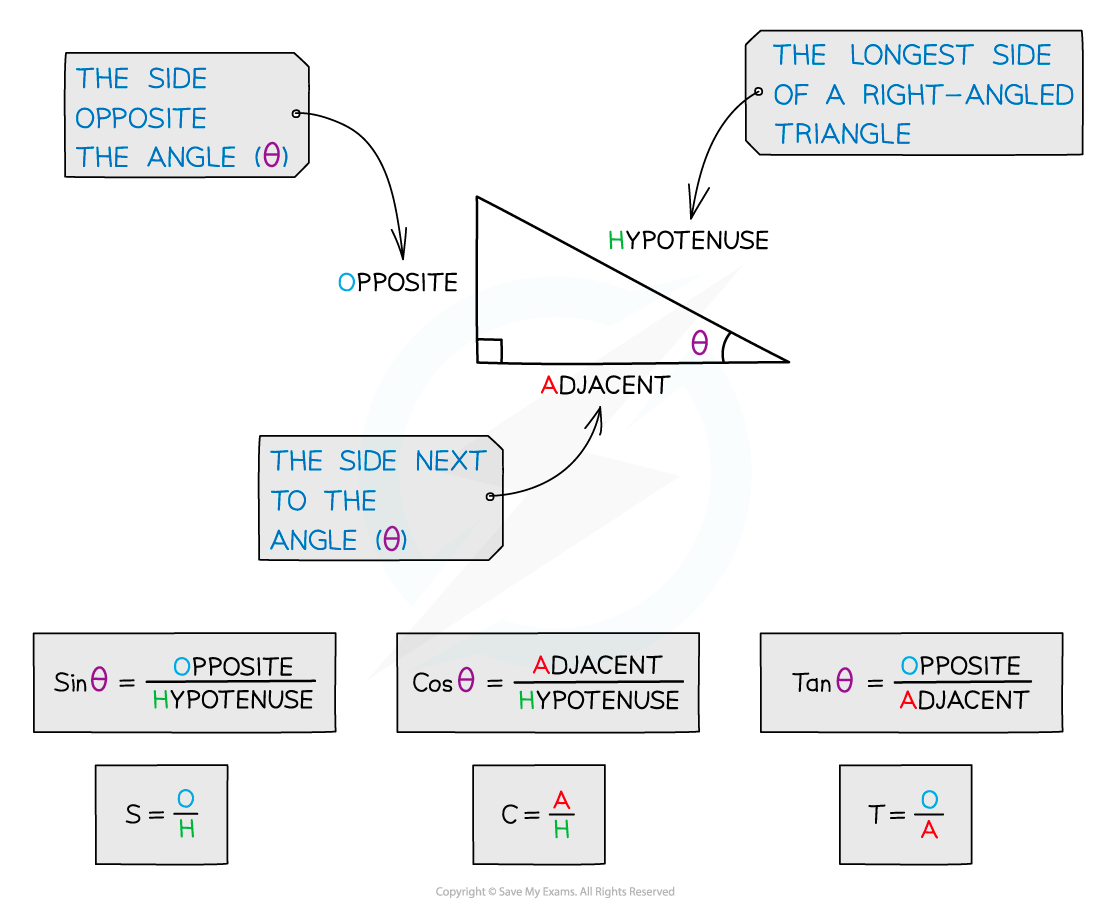
Examiner Tips and Tricks
Make sure you know the formulae for the Pythagorean theorem and SOHCAHTOA
They are not given to you on the exam formula sheet
An exam question probably won't tell you to use the Pythagorean theorem or SOHCAHTOA
But think about them whenever you see a right-angled triangle in an exam!
Worked Example
A chocolate bar is in the shape of a triangular prism . The end of the chocolate bar is an isosceles triangle, where
and
. Point
is the midpoint of
. This information is shown in the diagram below.

Calculate the length of BM, giving your answer correct to 3 significant figures.
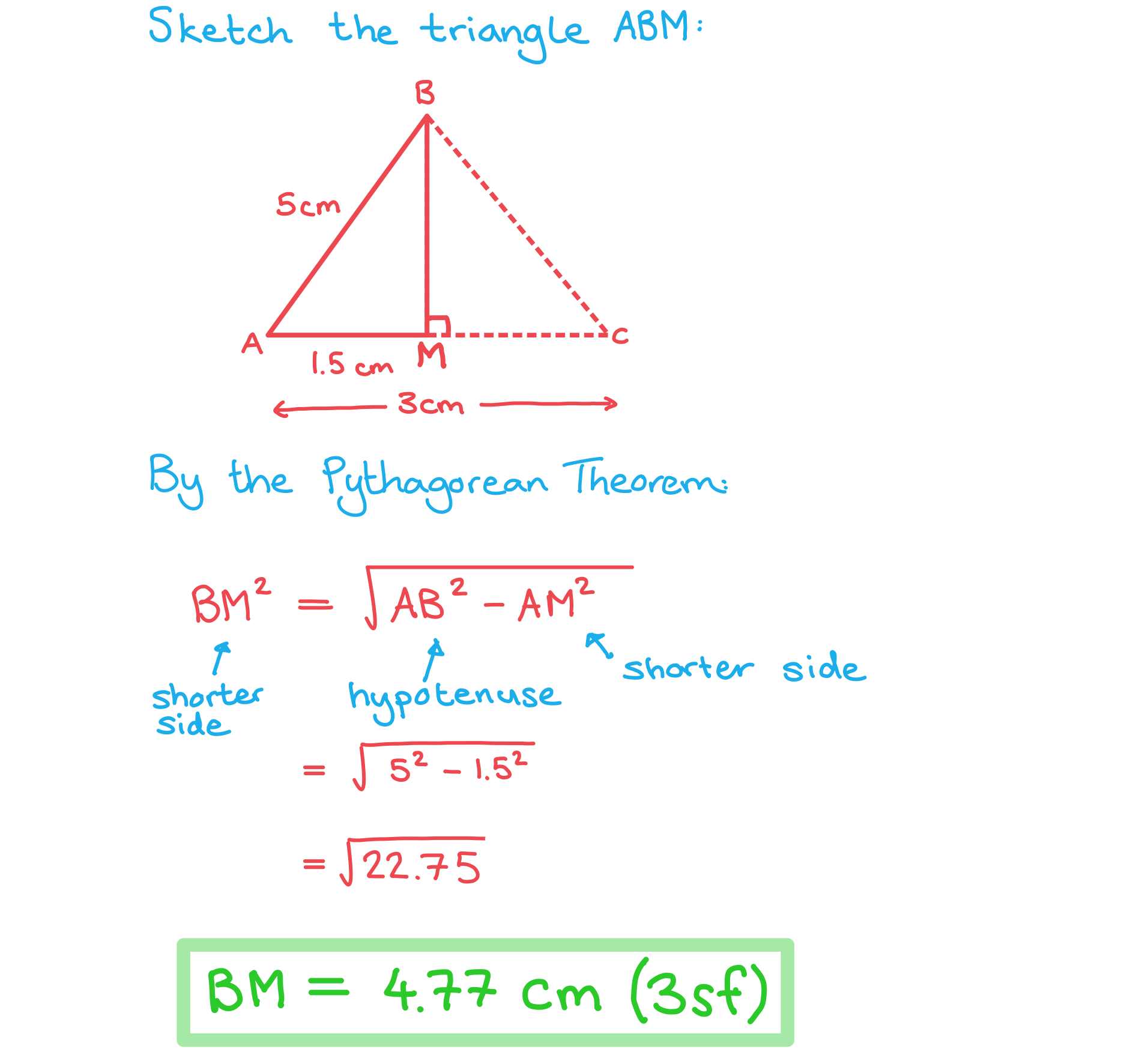
Worked Example
Find the values of and
in the following diagram. Give your answers correct to 3 significant figures.
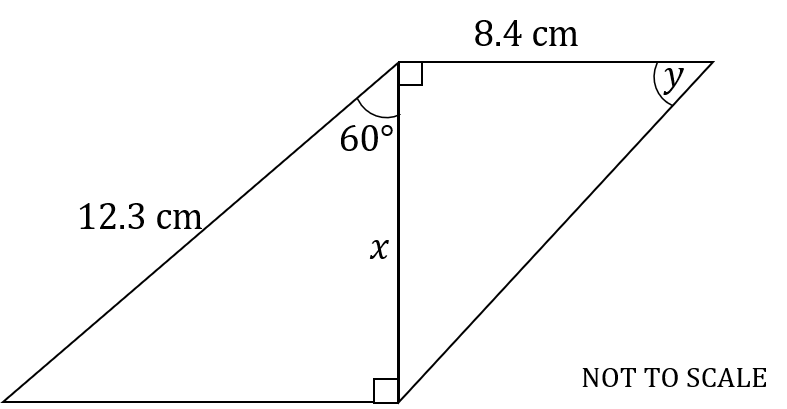
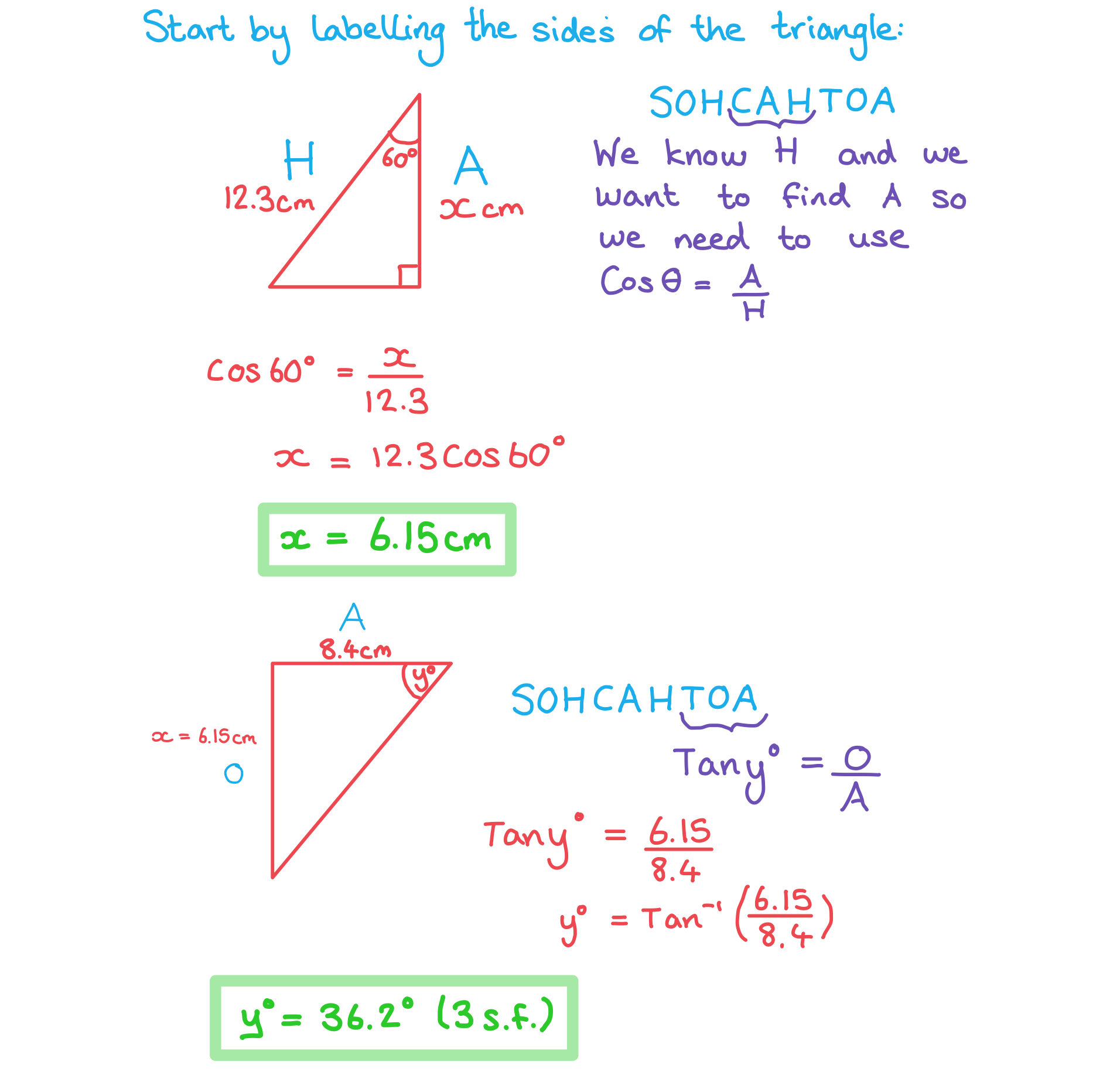
3D Problems
How does Pythagoras work in 3D?
3D shapes can often be broken down into several 2D shapes
With Pythagoras’ Theorem you will be specifically looking for right-angled triangles
You need right-angled triangles with two known sides and one unknown side
Look for perpendicular lines to help you spot right-angled triangles
There is a 3D version of the Pythagorean theorem formula:
is the length of the line segment
is the '
-direction distance' between the endpoints of the line segment
is the '
-direction distance'
is the '
-direction distance'
However it is usually easier to break a 3D problem down into two or more 2D problems
How does SOHCAHTOA work in 3D?
Again look for right-angled triangles including a missing angle or side
It may take more than one right-angles triangle to get to the answer
The angle you are working with can be awkward in 3D
The angle between a line and a plane is not always obvious
If unsure choose a point on the line and draw a new line to the plane
This should create a right-angled triangle
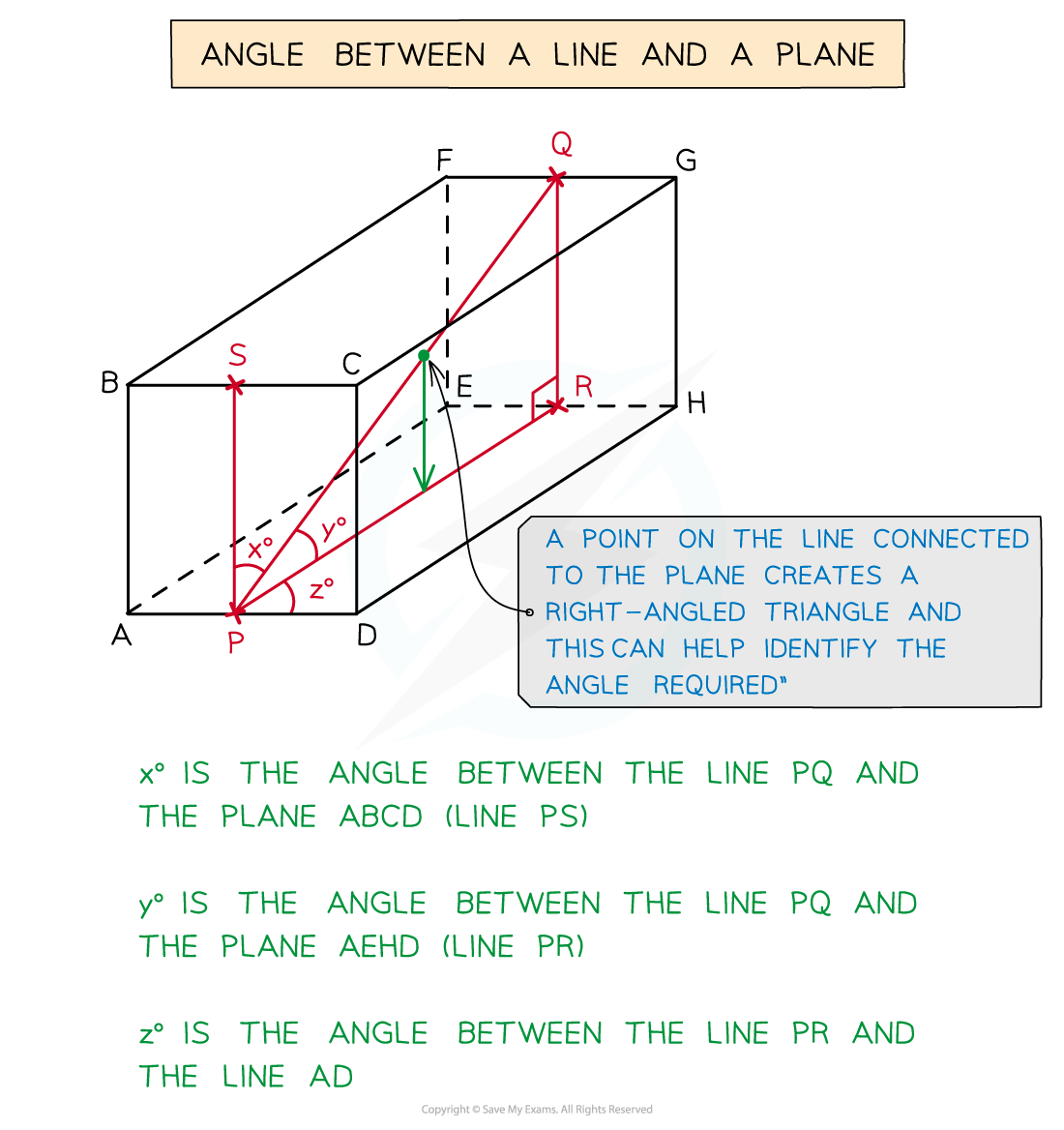
Examiner Tips and Tricks
Add values you have calculated to diagrams given in the question
Make additional sketches of parts of any diagrams that are given to you
Especially to help you 'see' a 2D portion of a 3D problem
If you are not given a diagram, sketch a nice, big, clear one!
Worked Example
A pencil is being put into a box in the shape of a cuboid with dimensions 3 cm by 4 cm by 6 cm.
Find:
(a) the length of the longest pencil that could fit inside the box,
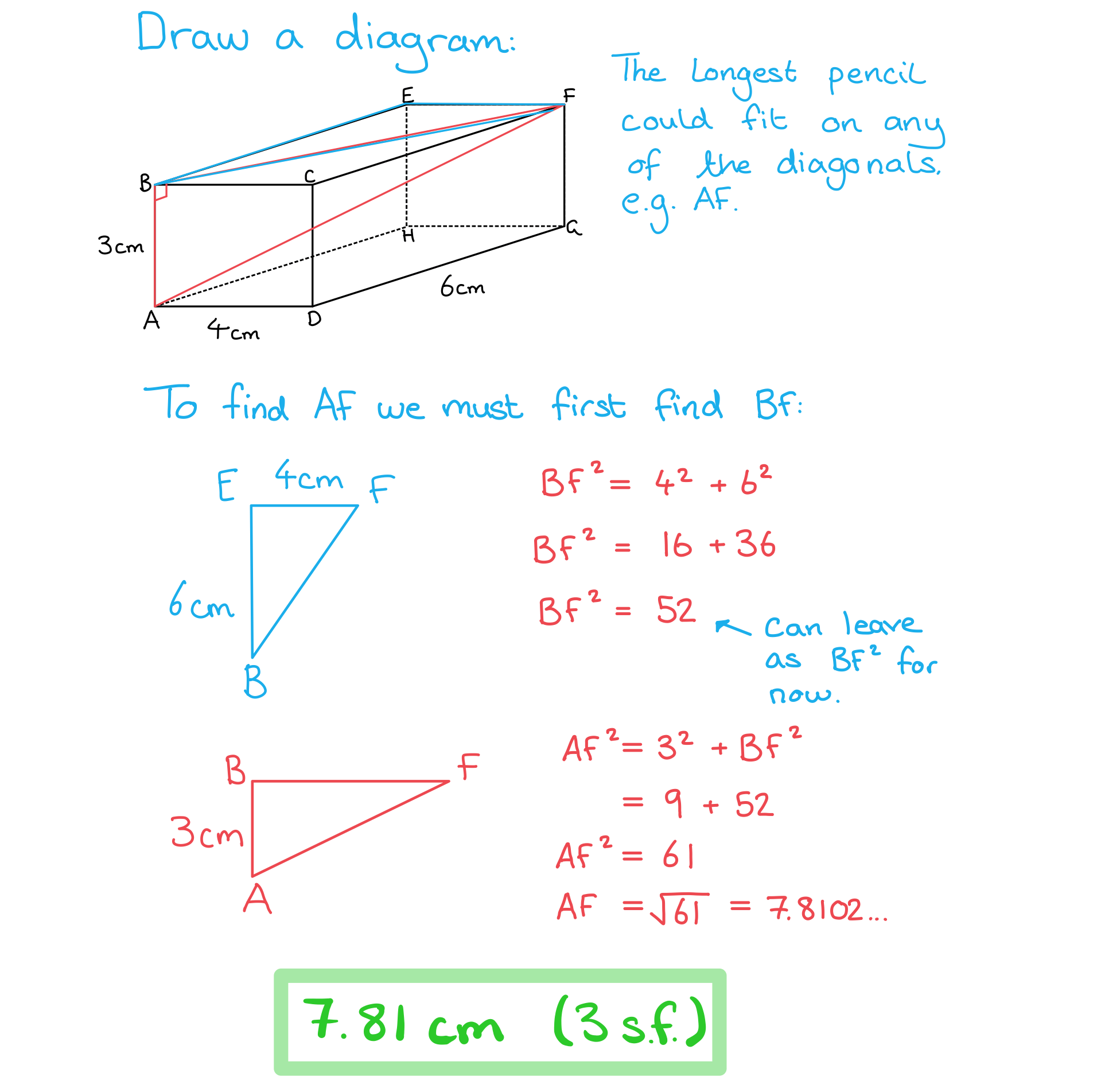
(b) the angle that the pencil would make with the top of the box.


Unlock more, it's free!
Did this page help you?